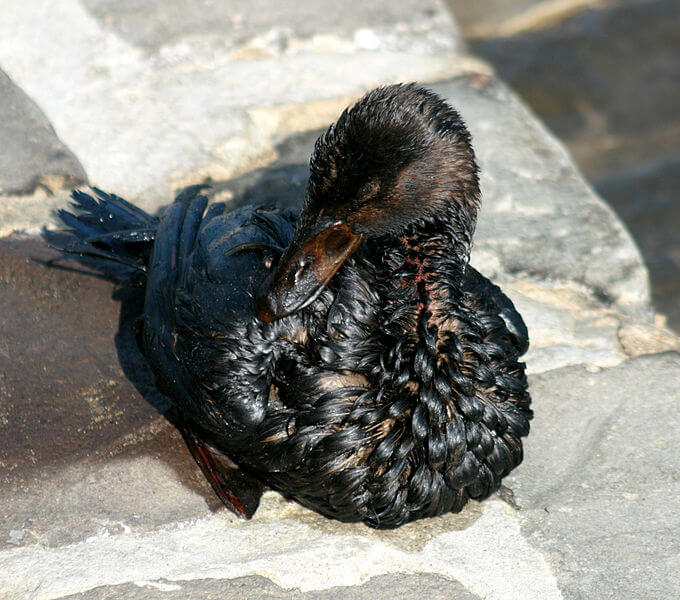"Gulls, pelicans, gulls and other seabirds are at the top of the food chain and as such they absorb toxins and pollutants collected by the fish they eat" so write the researchers in the journal "Science"

It turns out that the seabirds are used as an important and reliable tool to monitor the pollution in the days and to test the effect of the laws that are supposed to reduce the pollution.
"Gulls, pelicans, gulls and other seabirds are at the top of the food chain and as such they absorb toxins and pollutants collected by the fish they eat" so write the researchers in the journal "Science".
Seabirds are an excellent source for sampling infections in large geographic areas because they forage over vast areas but return to nest in fixed locations. In the birds' flight throughout the year in search of food over the surface of the oceans for the purpose of searching for food, they collect fish from different areas, thereby exposing them to toxins and concentrations of pollution. The birds, therefore, "sample" for the researchers the expanses of the oceans.
The various pollutants accumulate in the tissues (mainly in the fat) of the poultry, and their concentration increases. Over time, the toxins seep into the eggs and of course into the bodies of the offspring. The most well-known example is DDT, which, although its use was already banned in the seventies, remains of it still appear in various places around the world.
Testing the concentrations of toxins in seabirds does not harm the birds (which cannot be said about the contamination), since the tests are done on feathers collected in the litter, on eggshells and also on collected carcasses. Large amounts of plastic are found in the stomachs of seabird carcasses that are collected, which suggests an increase in plastic pollution that comes from garbage dumps and also from fishing equipment left in the sea.
Researchers from the Monterey Bay Aquarium estimate that about a million seabirds die each year as a result of ingesting plastic. About a hundred thousand marine mammals are added to them. Plastic is a common sight on the beaches (in our country the plastic bags "decorate" trees on roadsides, on the beaches and of course the wind carries the bags to the sea).
It is appropriate to differentiate between pieces of plastic that cause clogging of the digestive system or suffocation and thus death, and microplastics (below) tiny pieces of plastic that mix in the sand. On the surveyed beaches, microplastic was found a meter deep in the sand. On many beaches it is difficult to notice the plastic in the sand. Of course, the movement of the waves sweeps sand into the sea and this is how the microplastic particles reach the oceans.
Plastic in itself can be toxic, moreover, the microplastic adsorbs pollutants from the sea. Many pollutants are hydrophobic (water repellent) but easily attached to the tiny particles of plastic. That is, when a bird accidentally ingests plastic particles, it ingests toxins in a high concentration.
It is worth noting that the large industries are making efforts to reduce the use of plastic and it turns out that most of the plastic comes from "personal uses" such as bags, packaging, etc. And so, unlike in many cases where the blame is placed on the industries, in this case everyone is guilty.
The ongoing tests since the XNUMXs have shown that the remains of DDT are indeed disappearing, but other threats are being discovered. High levels of FBDI were detected. (polybrominated diphenyl ethers PBDE). It turns out that these substances, which are used as flame retardants, disrupt hormonal activity. Although today there is already a ban on the use of these substances, there are still those who do not obey the ban. Despite attempts at supervision, it turns out that the authorities are engaged in "cat and mouse games" with the big industries when most of the new products reach the markets from China and other countries where supervision is lax. Until it becomes clear that there is a problem - the products are already on the market.
In any case, until the implementation of the ban, millions of tons flowed into the seas and millions more tons are still found in various products that when "their time has passed" and without proper treatment will reach the sea. That is, the same FBDI materials. They will continue to "enrich" the terrestrial and marine environment for many years, and of course "marine" plastic will continue to flow into the sea, concentrating the toxins and poisoning the environment.
And it has already been said that the time has come that instead of controlling the environment for the sake of the human population - there will be control of the human population for the sake of the environment!
